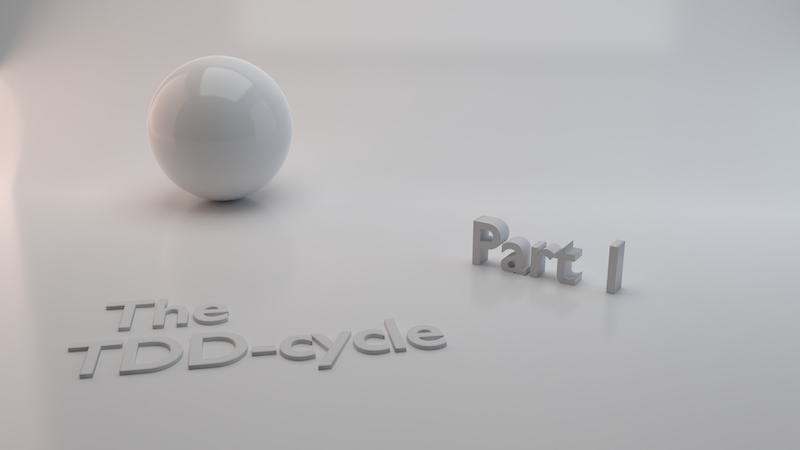TDD for kickstarters- part 1

The cycle of test driven development contains three steps:
-
You start by writing a test that fails, which describes something you want your code to do that currently doesn’t.
-
Then you write the simplest thing you can think of, to get that test passing that comes into your mind.
-
If necessary, you refactor that the code is going to be as easy to change as possible. You look here for code that is hard to understand, for problems with complexity or duplication or dependencies. It’s the refactoring step where a lot of the design in TDD happens.
TDD drives design and development of code using tests as your specification
Let`s use an example with a shopping basket. You start by writing a test. Not the ShoppingBasket.class. Start with the simplest test case you imagine of the ShoppingBasketTest.class (an empty ShoppingBasket).
@Test
void totalOfEmptyBasket() {
ShoppingBasket basket = new ShoppingBasket();
assertEquals(0.0d, basket.getTotalAmount(), 0.0d);
}
That’s how TDD works. You don’t write a Production-Code class. First, you write a test that uses a (non-existent) Production-Code class, and then you implement that class. With each test, you make just a few design decisions and then you write the code that this test requires.
Now, from the test case, you can implement the simplest way to getting it.
public class ShoppingBasket {
public double getTotalAmount() {
return 0d;
}
}
Here are some following tests for the interested reader as an exercise.
- totalOfSingleItem
- totalOfTwoItems
Hint: If something changes, look first at your test code, don’t edit it in your production code unnecessarily!
If you are looking at your tests now, these are your specification steps of your software solution that are up and running now.
After each iteration, you should come back to your TestSuite and maintain your test code and/or your production code little bit, if necessary. This is the third step of the TDD cycle. For further reading you can check my kickstart refactoring series later.
This is part one of the TDD kickstart beginner series. Here is part 2.